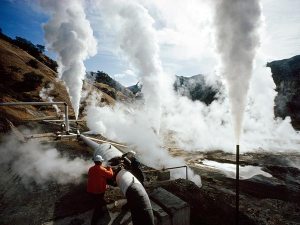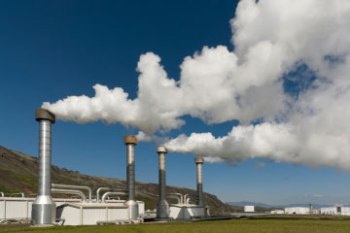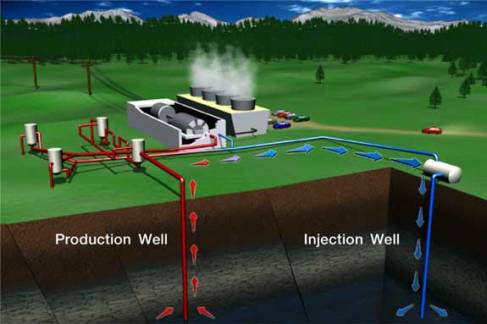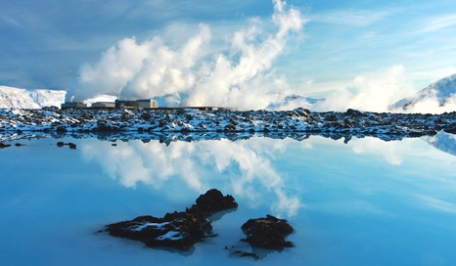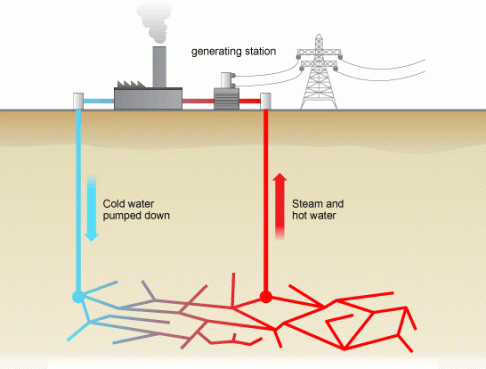 A type of technology that utilizes this form of energy is Enhanced Geothermal Systems (EGS). EGS works by drilling an “injection well” 4 to 10 kilometers deep, until reaching temperatures of 200 C from the hot rock below. Then high pressurized cold water is pumped down, creating fissures in the barely permeable rock. The water is then heated up by the hot rocks and creates a large reservoir of very hot geothermal fluid. Next, another hole (with similar depths to the first one) is drilled nearby and pumps the heated fluid back to the surface. As the fluid rises, the pressure decreases and it turns to steam. Finally, the steam can be captured and run a series of turbines to generate electricity. If there is ever any excess water, it can be returned back to the reservoir, which creates a “closed loop” system.
A type of technology that utilizes this form of energy is Enhanced Geothermal Systems (EGS). EGS works by drilling an “injection well” 4 to 10 kilometers deep, until reaching temperatures of 200 C from the hot rock below. Then high pressurized cold water is pumped down, creating fissures in the barely permeable rock. The water is then heated up by the hot rocks and creates a large reservoir of very hot geothermal fluid. Next, another hole (with similar depths to the first one) is drilled nearby and pumps the heated fluid back to the surface. As the fluid rises, the pressure decreases and it turns to steam. Finally, the steam can be captured and run a series of turbines to generate electricity. If there is ever any excess water, it can be returned back to the reservoir, which creates a “closed loop” system.
This is an environmentally sustainable technology because it does not emit pollution or gas emissions because it is a closed loop system! The closed loop reuses the materials again and again, without releasing any harmful by-products. In addition, if one geothermal plant runs out of heat, they can drill new holes a few kilometers away and the Earth will reheat the previous area. Unlike fossil fuels, they do not damage the surrounding area either because power plants are built directly on top of the geothermal resources, so no additional land is needed. The surrounding land is also untouched, so it can be used for “complementary means”. Also, EGS can use local wastewater and reduce water pollution in nearby communities. To summarize, the EGS is a very environmentally sustainable technology because will not emit any harmful by-products and reuse its materials because it’s literally in a “world of it’s own” (closed-loop system hint hint), it will not negatively impact the surrounding area and takes very little space compared to land use of coal and other fossil fuels, and there is limitless geothermal potential energy that can power the world 24/7.
